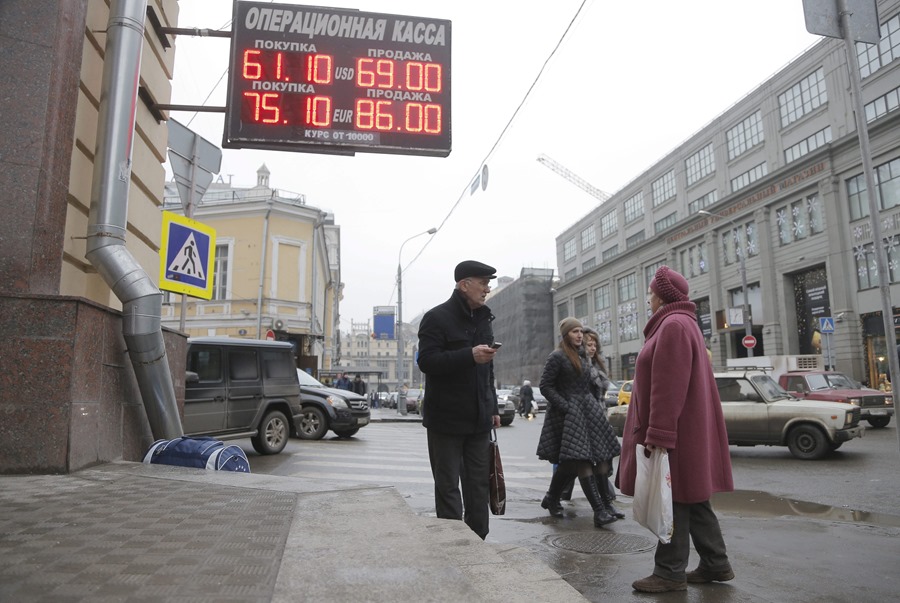Paris (EFE).- The OECD has improved its prospects for the Spanish economy and anticipates growth of 2.1% this year, which if confirmed would be the strongest of the large developed countries, and 1.9% next year.
In its semi-annual Perspectives report published this Wednesday, the Organization for Economic Cooperation and Development (OECD) revised its own estimates for the month of March for 2023 upwards by four tenths and those it had made in November by eight.
It is somewhat more optimistic than the European Commission, which in mid-May had predicted a progression of the gross domestic product (GDP) of 1.9%, and is in line with the projections of the Government, which in the Stability Program that it sent to Brussels in April it had also calculated 2.1%.
It is true that this represents a rate of progression that is not even half that of the last two years (5.5%), which were recovery after the abysmal hit that Spain suffered due to covid in 2020 (-12.2 %), but it is more than double what is expected for the euro area as a whole (0.9%).
And it is higher than that of all the large developed economies, such as the United States (1.6%), South Korea (1.5%), Japan (1.3%), Canada (1.4%) and Australia ( 1.8%).

Not to mention the European heavyweights, who are still in a state of convalescence worse than Spain due to the shock of the war in Ukraine on energy and food prices, with anemic rises in GDP of 1.2% in Italy last year. 0.8% in France, or 0.3% in the United Kingdom and stagnation in Germany.
The fifth fastest growing country in the OECD
This year there will only be four OECD countries that will have higher growth than Spain: Greece (2.2%), Portugal (2.5%), Costa Rica (2.8%) and Israel (2.9%). .
As for next year, although 1.9% in historical terms is a relatively low figure, it is two tenths more than in the previous forecast of the OECD itself and is almost the same as what the European Commission has calculated (2 %), when the Government of Pedro Sánchez trusts in an acceleration (2.4%).
The authors of the study consider that, in the context of the Russian invasion of Ukraine that began in February 2022, “the Spanish economy has behaved remarkably well”, and to illustrate this, they refer to the fact that GDP increased by 0.5% in the first quarter of the year and 3.8% in twelve months.
Improved business and consumer confidence
The keys to this result are the improvement in business and consumer confidence (although that of the latter remains very low), the dynamism of the labor market, with an unemployment rate that has gone from 13% in December to 12 .7% in April and inflation that stood at 2.9% year-on-year in May according to the harmonized index (3.2% in the CPI).
The OECD, however, does not believe that inflation will stay at that level, which is partly the mathematical effect of energy prices that have fallen a lot after having risen a lot, and anticipates 3.9% on average this year and the same in 2024.
These are figures, especially those for this year, among the lowest in Europe and even in the G20.
As in all OECD countries except South Korea, due to inflation, wages in Spain lost purchasing power between the second half of 2021 and the second half of 2022, specifically 2.66%, less than in Italy ( 4.39%), than in Germany (4.08%) or the United Kingdom (2.74%), but higher than the United States (2.49%) or France (1.27%).

However, the statistics of real disposable income, which is an indicator that integrates taxes, contributions and benefits, show that in this period Spain was one of the eleven countries of the organization (there are 38) in which it increased (0 .56%).
Spain will continue to be the red lantern of unemployment in the OECD, despite the fact that the unemployment rate will drop from 12.9% on average last year to 12.8% in 2023 and 12.4% in 2024.
And as for the public deficit, the organization’s experts consider that it will be reduced but moderately, from 4.8% of GDP in 2022 to 3.5% this year and to 3.2% in 2024. This will also allow cut public debt to just below the symbolic 110% threshold next year.
The OECD improves its forecasts, but worries about inflation and interest rates
The OECD has revised upwards, as it did in March, its growth forecasts for the world’s main economies because some risks that clouded the economic situation have moderated, such as the rise in energy prices or the reopening of China after the long hibernation due to the covid.
But the growth rates in his Economic Outlook report published this Wednesday are relatively low, compared to what they were before the coronavirus crisis, and there are also clouds on the horizon because core inflation remains high and because the rise in interest rates has exposed the vulnerabilities of financial markets.
Faced with a very large level of debt, which increased a lot in some countries due to expenses due to the pandemic and later also with measures to alleviate the escalation of energy prices with the war in Ukraine, the message of the Organization for Economic Cooperation and Economic Development (OECD) is that public spending must be limited and more selective, directed at those most in need.
Higher growth, but still low
The report calculates that the world economy will grow by 2.7% this year, one tenth more than it had anticipated in March and five more than in November.
By 2024, expect a slight acceleration, to 2.9%. In any case, still clearly below the 3.4% that was on average between 2013 and 2019, just before the covid.
The OECD has raised expectations for this year for most G20 members, but there are notable differences between the progression of gross domestic product (GDP) that it expects in the emerging giants that are India (6%) and China (5.4%) and the Western powers.
Recovery of the pre-covid activity level
Among the latter, Spain will present the greatest expansion in relative terms (2.1%), although it must be remembered that in the first quarter it was one of the four OECD countries (together with Germany, the United Kingdom and the Czech Republic) that still it had not recovered the pre-covid level of activity.
Below 2% will remain the United States (1.6%), but also Australia (1.8%), South Korea (1.5%), Canada (1.4%) and Japan (1.3% ), not to mention the large European economies such as Italy (1.2%), France (0.8%), the United Kingdom (0.3%), and in particular Germany (0%), totally stagnant.
The two South American members of the G20 have very different fortunes: Brazil’s GDP growth has been revised upwards notably (seven tenths since March) and should be 1.7% this year, a rate that is in any case anemic for the needs of a young and growing population. And it will not be better in 2024 either (1.2%).
As for Argentina, the prelude is a new decline this year (-1.6%), which will be followed next year by an incomplete recovery (1.1%).
Russian economy down, but not sinking
The case of Russia deserves a separate analysis. In June of last year, the organization predicted a collapse of 10% of its GDP in 2022. Later it moderated those forecasts, but even so it was far from the effective decrease of 2%.

In November, when he already saw that his calculations were not going to be fulfilled by 2022, he said that the recession was going to worsen in 2023, with an economic decline of 5.6%. Now again he has had to abruptly recalibrate those calculations and expects a decline in GDP of 1.5% in 2023 and 0.4% in 2024.
Limited effect of sanctions
Behind all of this is the realization that the sanctions have had a limited effect, probably because outside of the Western front, Russia has continued to trade with many emerging countries, starting with China and India, which are the ones that have replaced Europe as main markets for its hydrocarbons.
The chief economist of the OECD, the British Clare Lombardelli, warns that the trade and investment restrictions that some countries have imposed due to the tense geopolitical situation and concerns about supply chains constitute a threat.
Such restrictions can reduce the benefits of international trade and harm development prospects in poor countries, Lombardelli believes.
In his opinion, “only ambitious structural political reforms can appreciably increase long-term economic growth and the quality of life of people around the world.”
The Government insists that the OECD forecasts show “dynamism and strength” of the economy
The Ministry of Economic Affairs has considered that the OECD forecasts released this Wednesday show “the dynamism and strength of the Spanish economy”, since growth of 2.1% is expected this year and if confirmed it will be “one of the developed countries with higher growth.
“Spain will grow more than double that of the euro area (0.9%) and half a point more than the OECD as a whole (1.4%)”, which shows “the dynamism and strength of the Spanish economy”, says the ministry of Nadia Calviño in a statement after learning about these projections.






